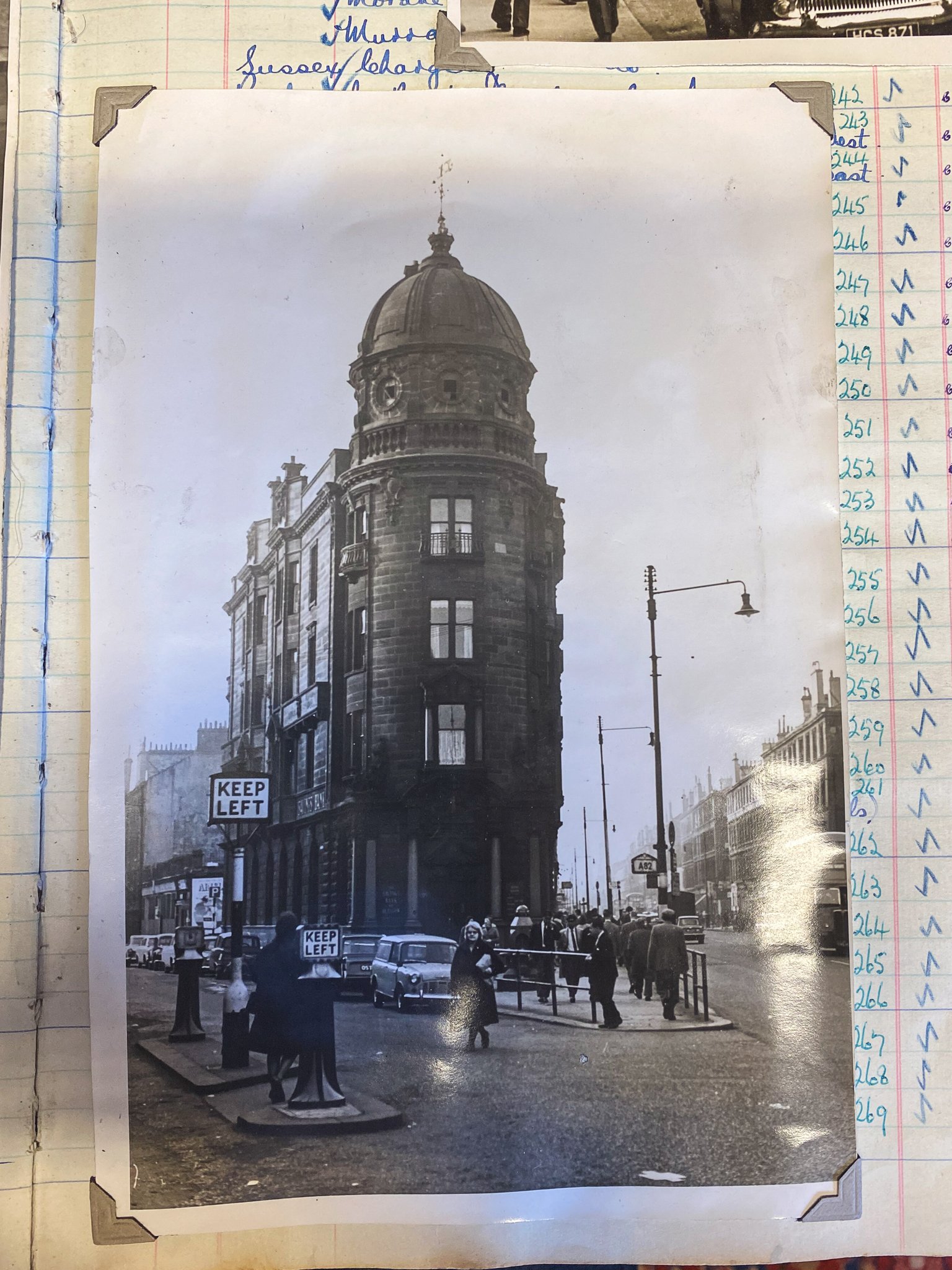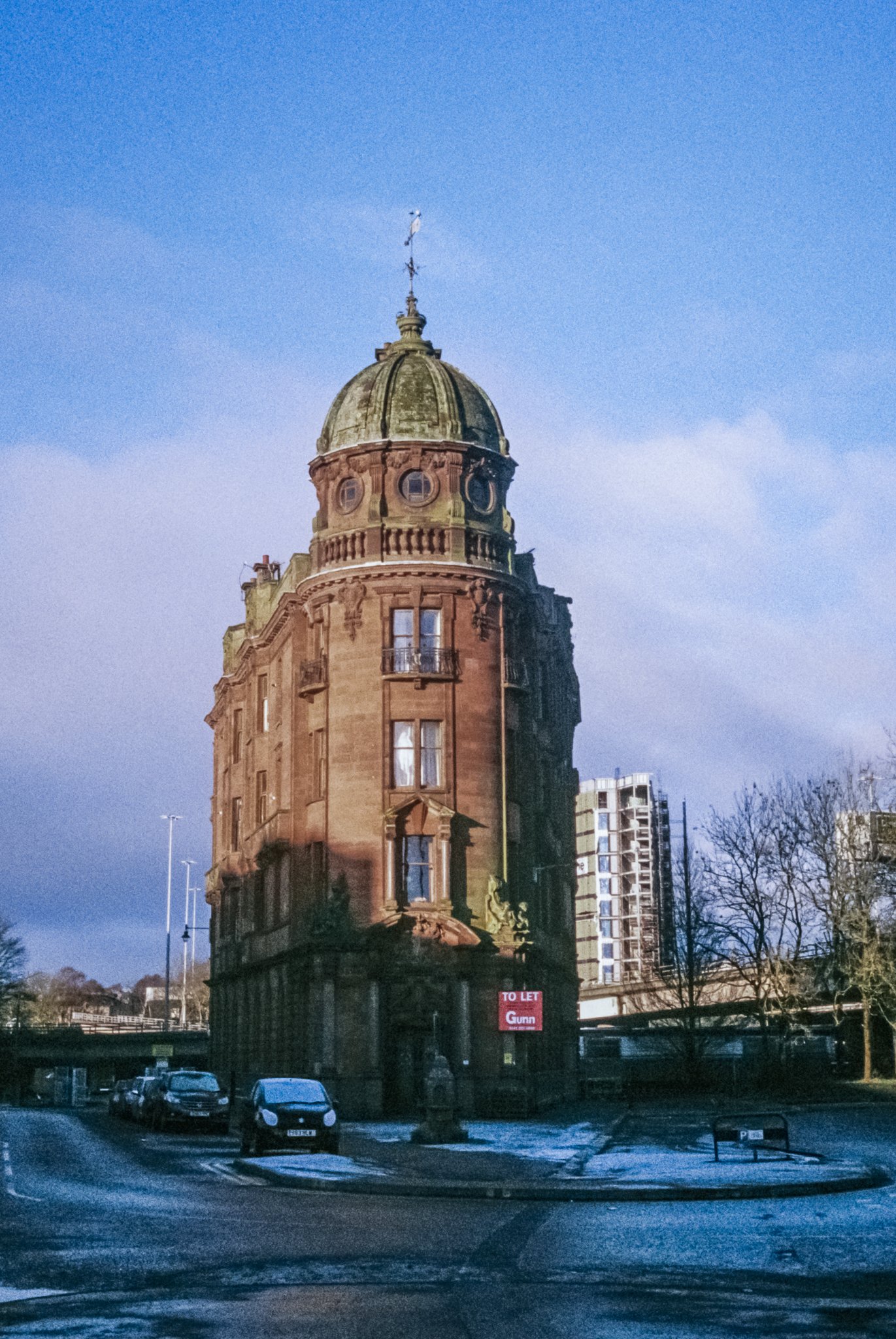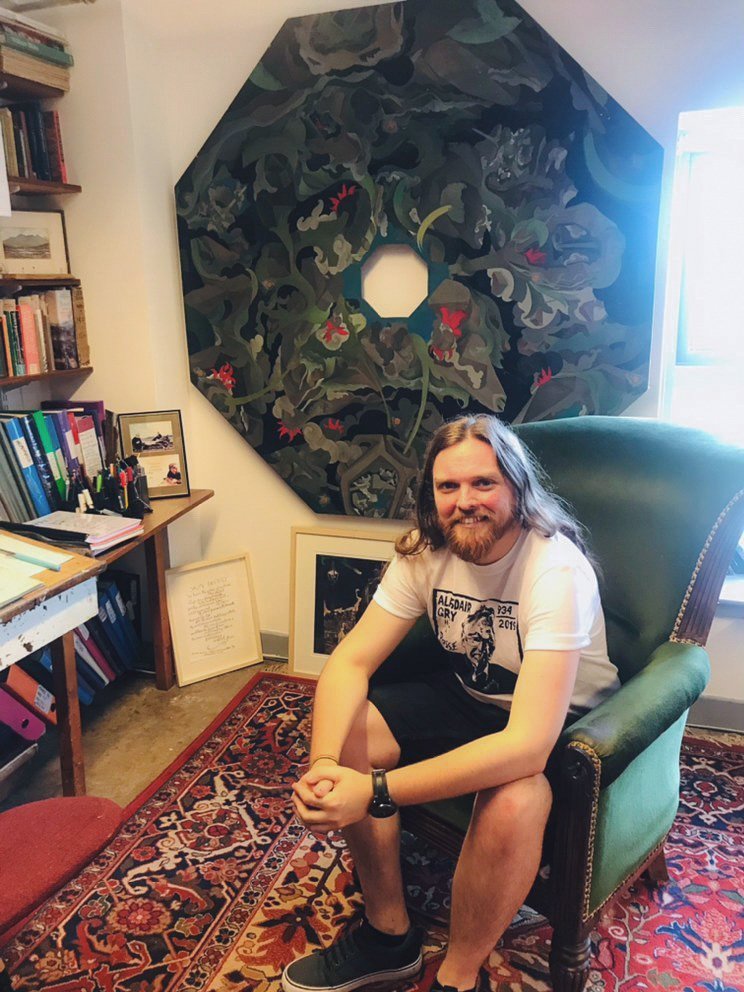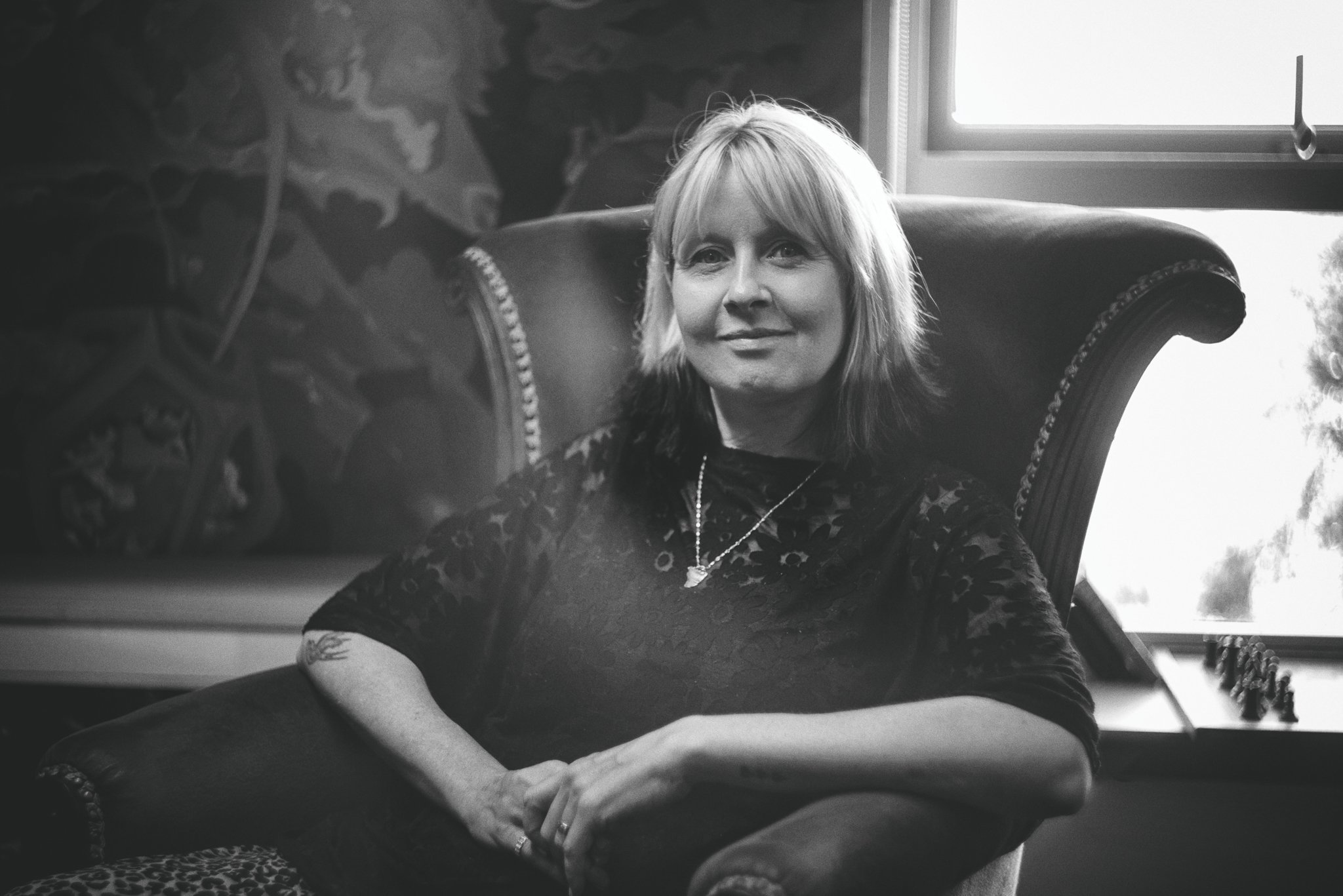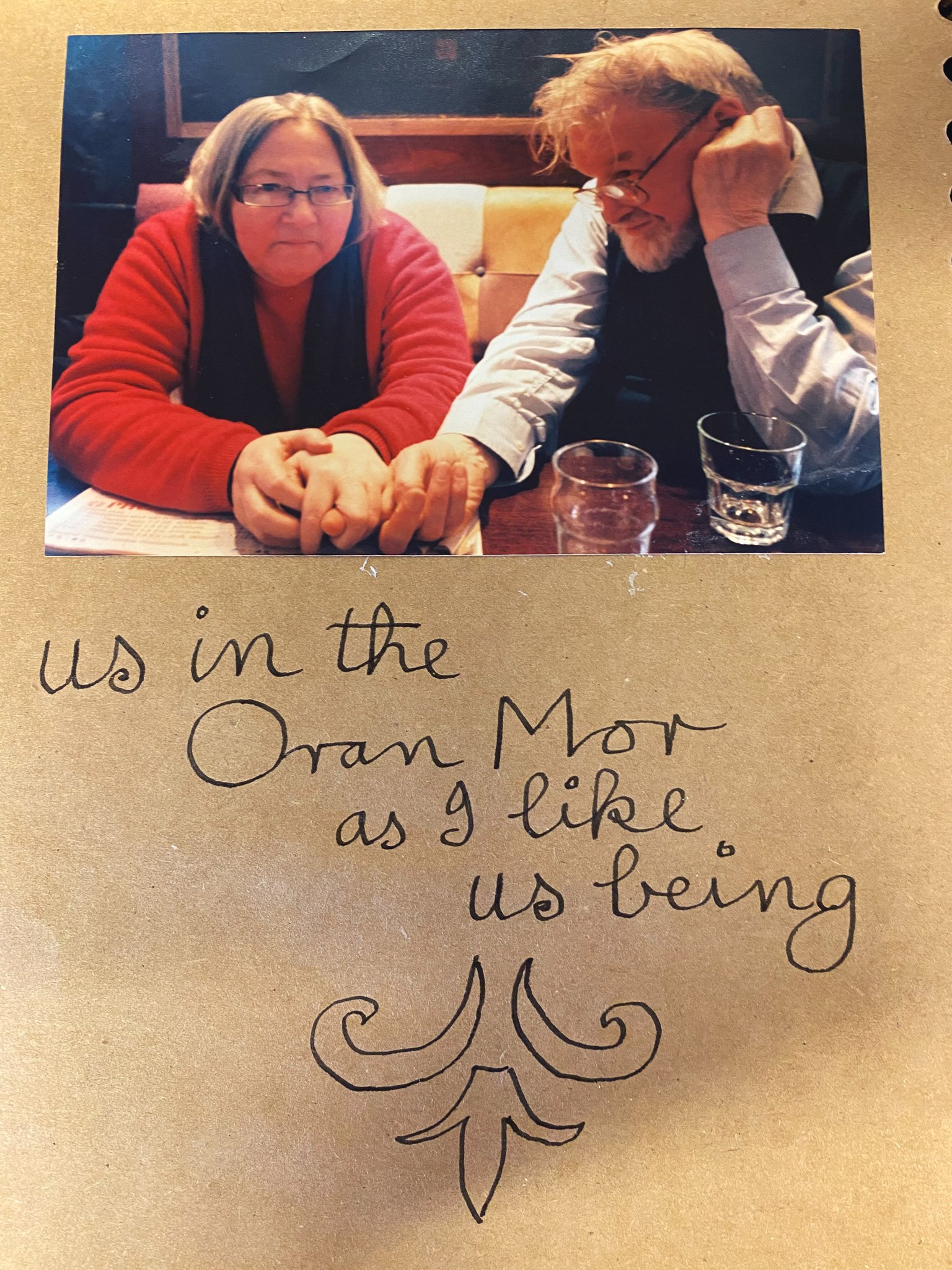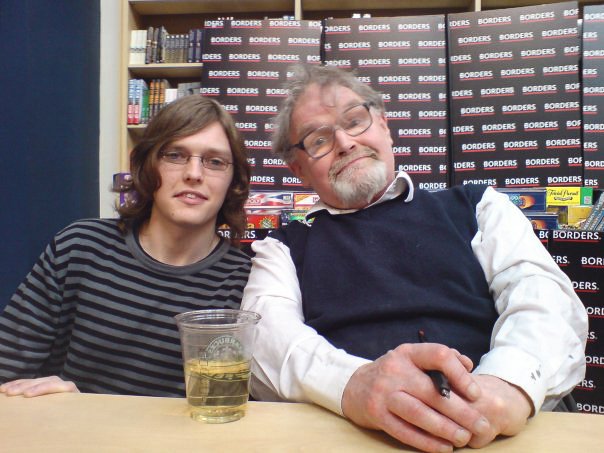The Alasdair Gray Archive
This month I was invited to The Alasdair Gray Archive by its wonderful custodian, Sorcha Dallas. The purpose of the archive is to promote and educate on the life and work of this celebrated cultural polymath, who was and continues to be a huge influence on my life and my art, so visiting and photographing the archive was very special to me. It’s free to visit via appointment, and its contents paint a vibrant and very intimate portrait of the artist. I feel we are incredibly fortunate to have such a rich and accessible collection of Gray’s life and work all under one roof, which is thanks both to Alasdair himself for making his intentions clear prior to his passing in 2019, and to the excellent work of Sorcha and everyone else involved. As you browse through the collected artworks, correspondence, books and pictures, you feel a very strong connection to Alasdair, his inspirations, and his output; just as he would have wanted.
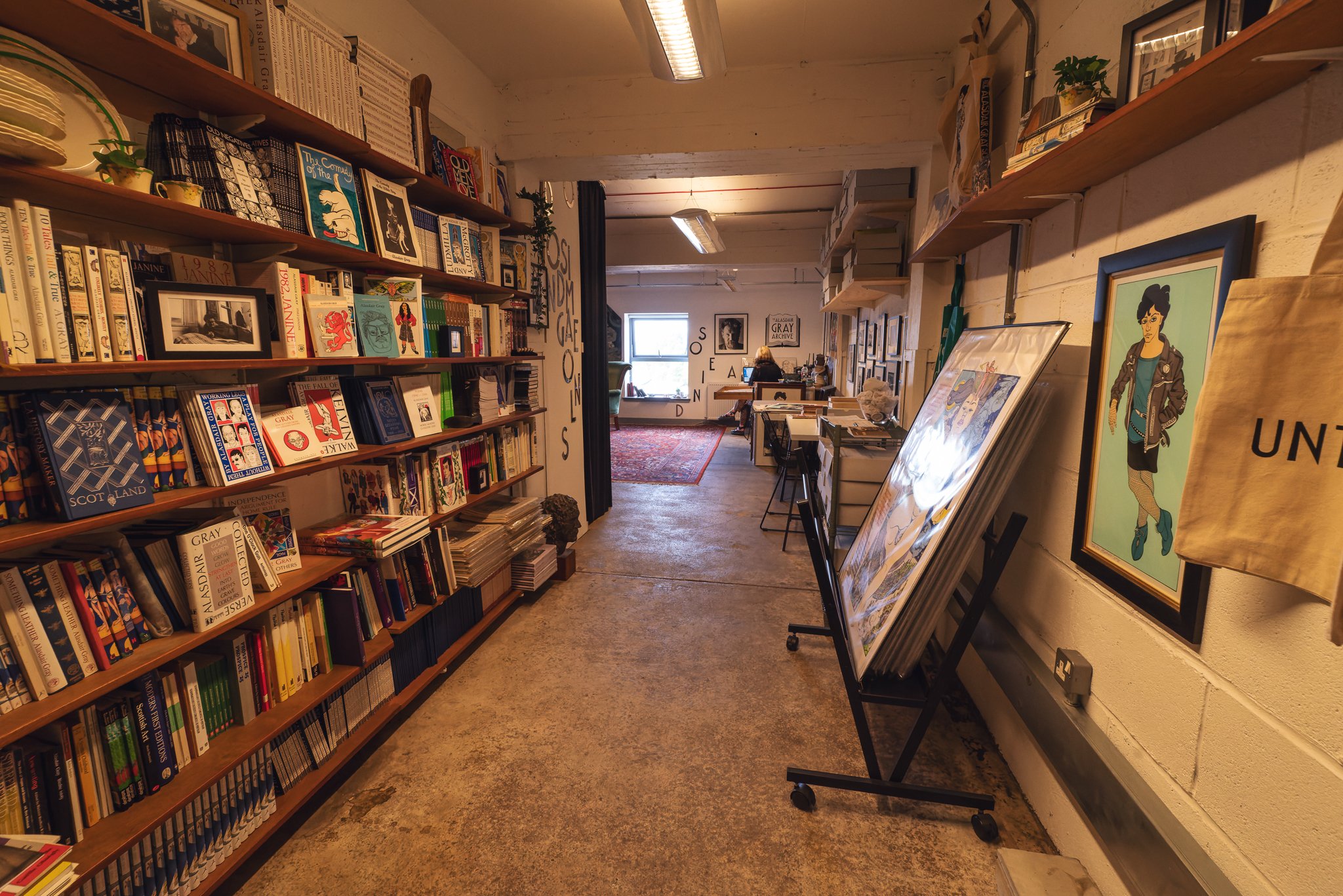
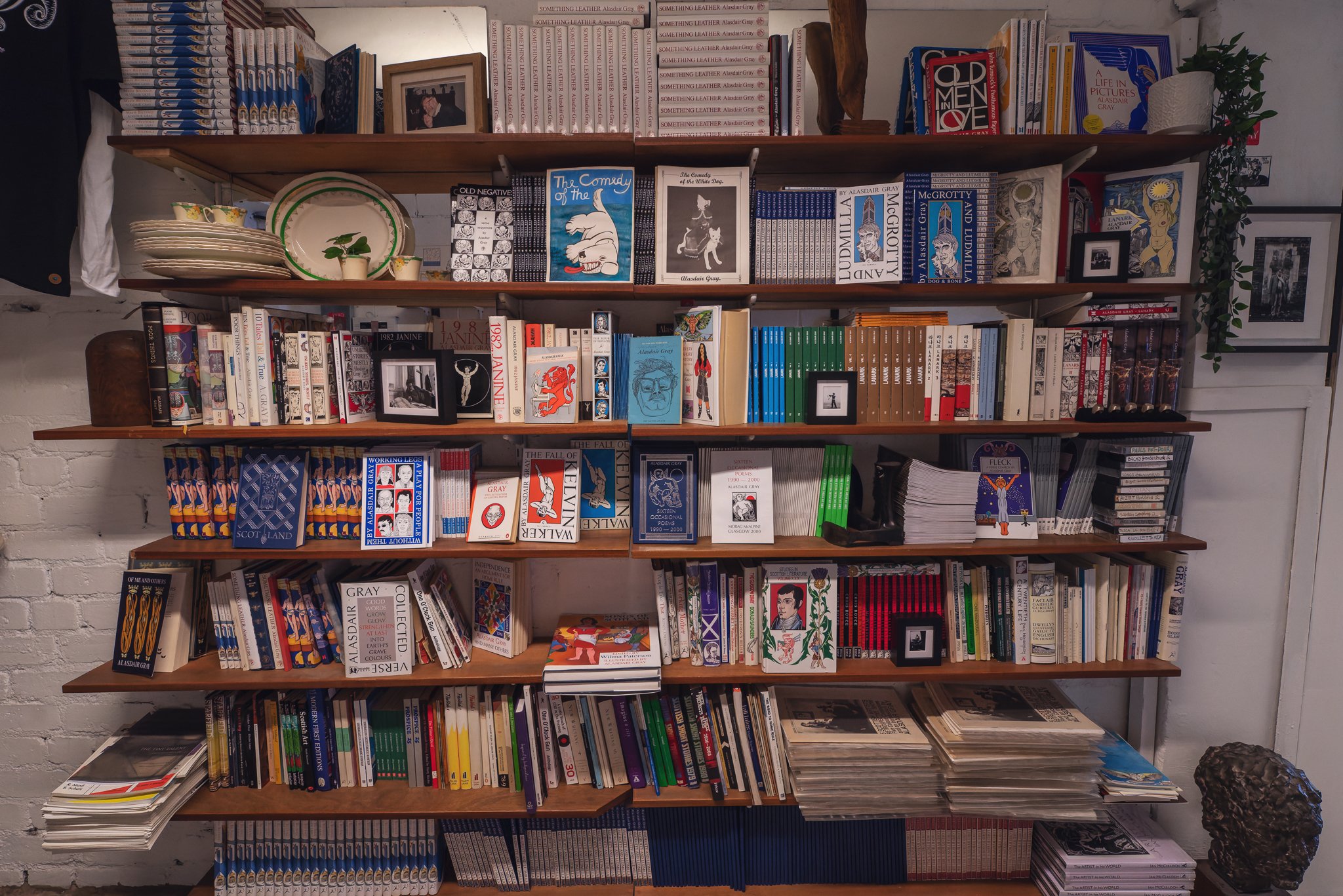

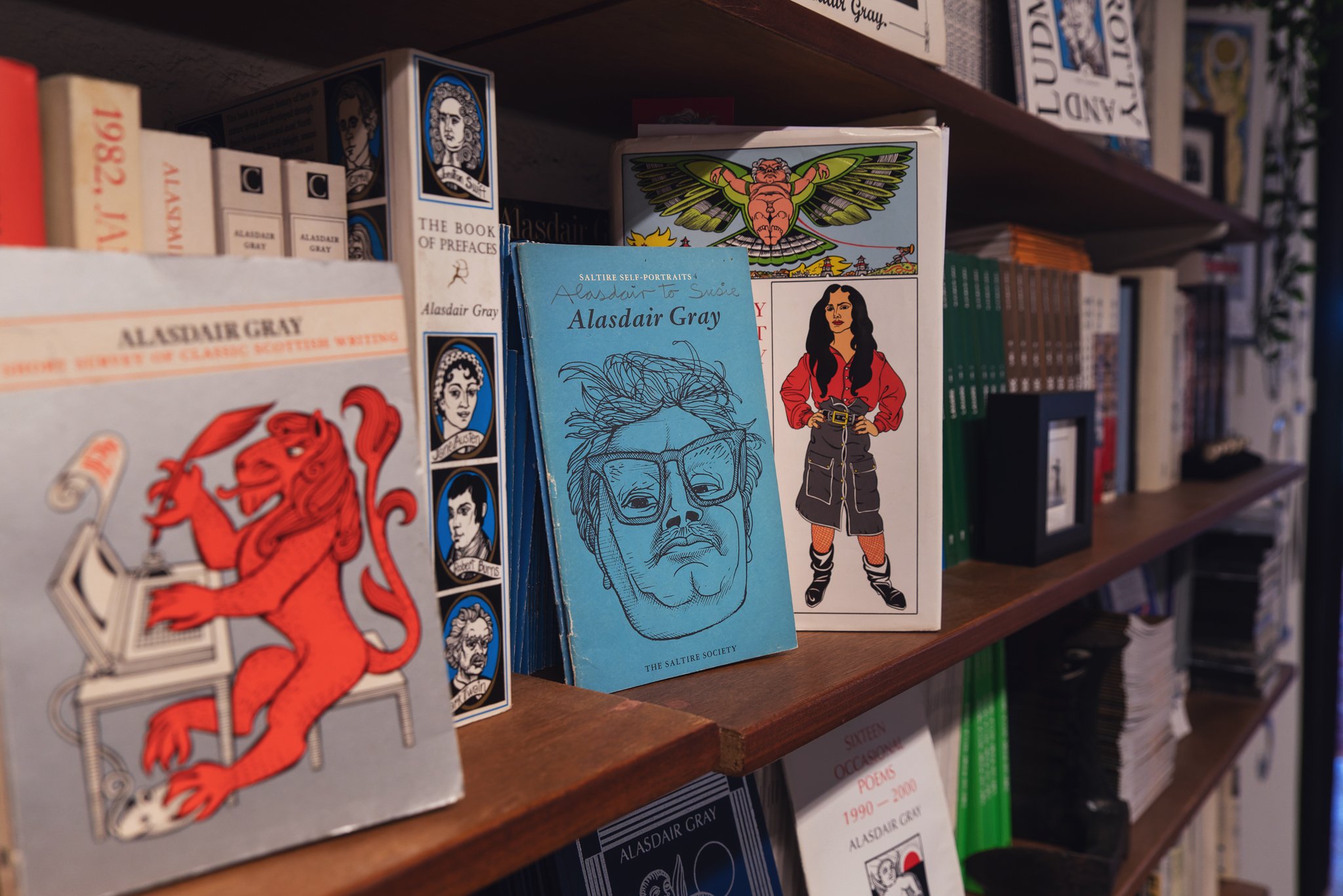
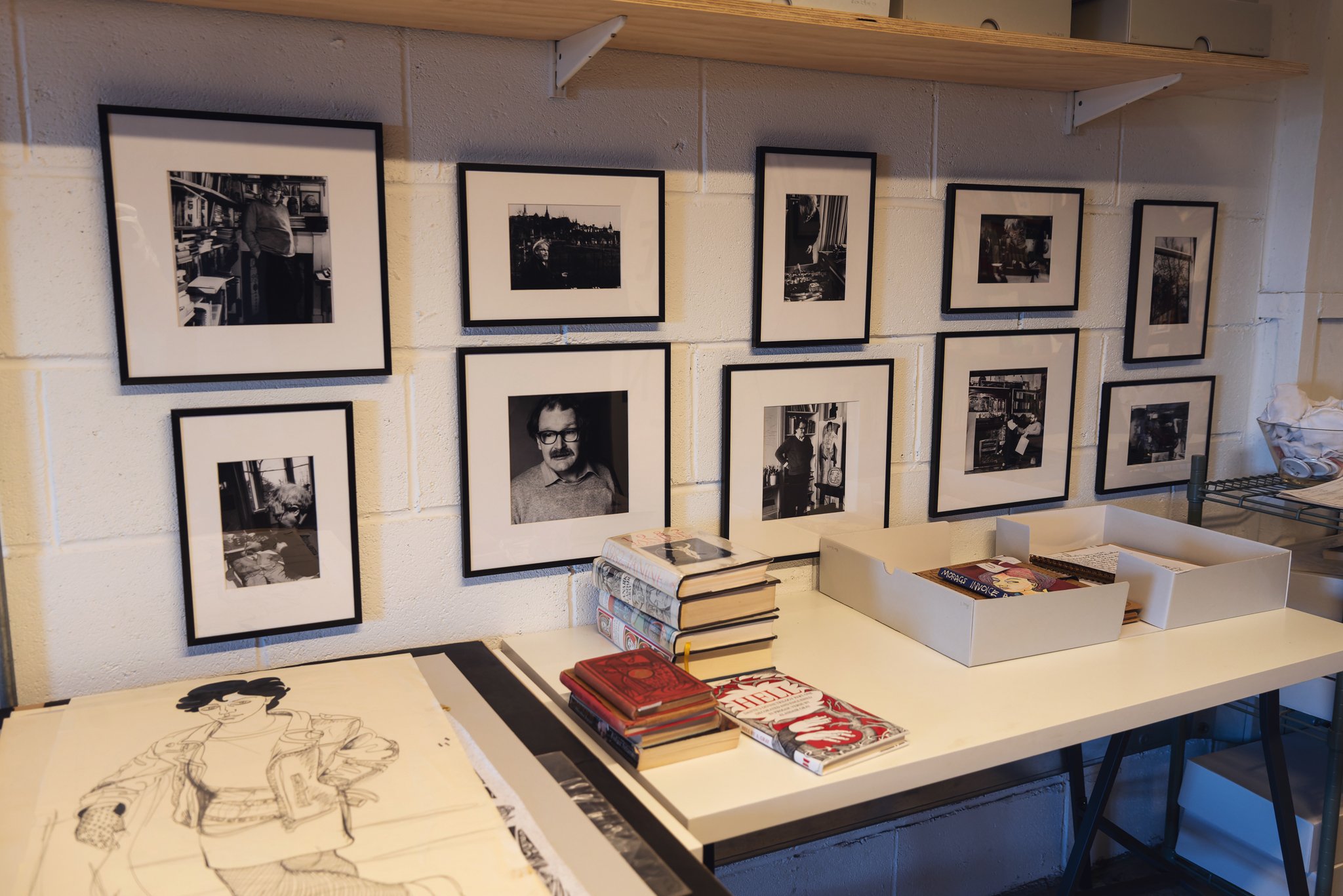
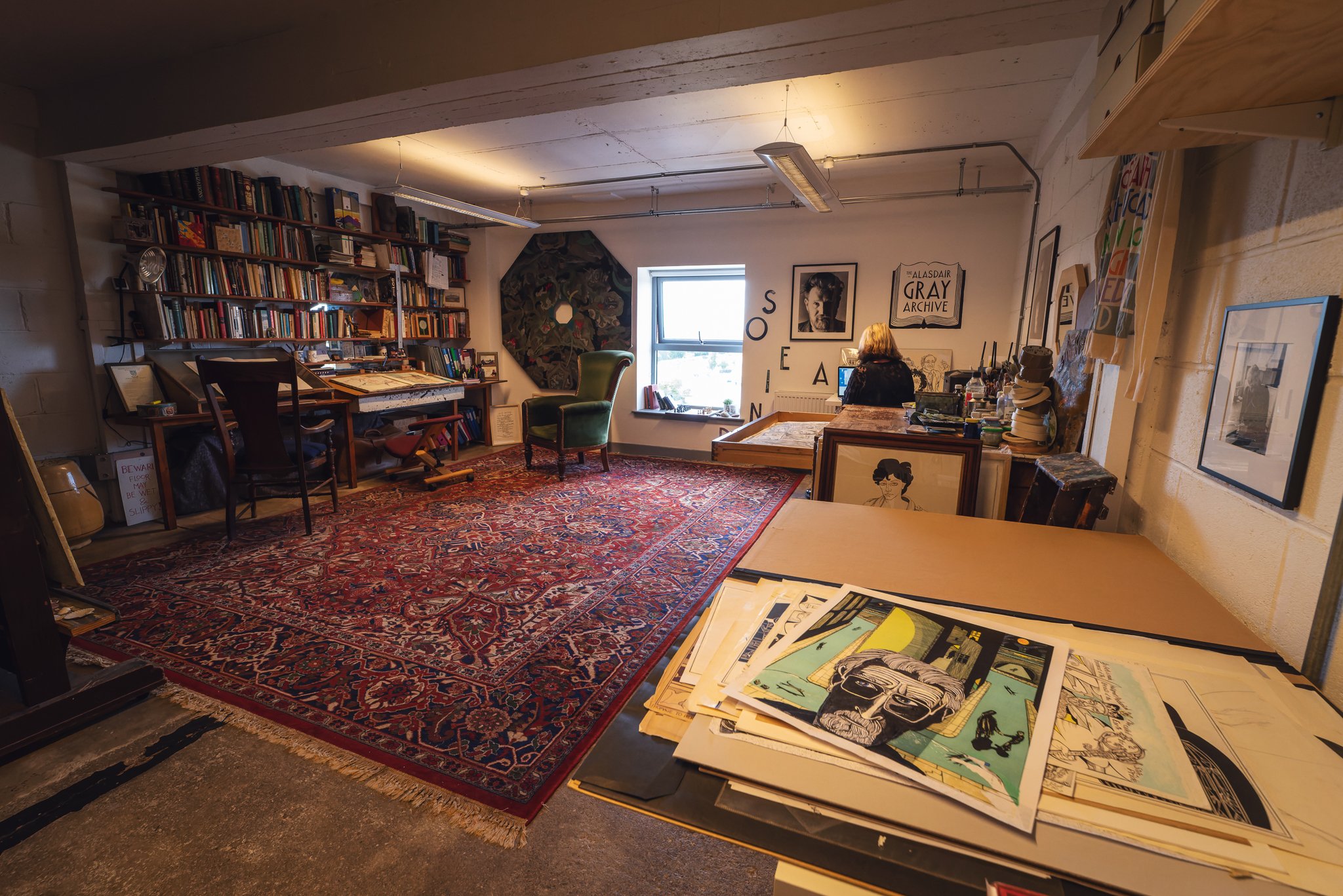
A wall of books greets you upon arrival at the Archive; Alasdair’s own stock of his publications, multiple copies of everything he wrote or collaborated on, with translations destined for countries all over the globe. Drawings, paintings, designs, and photographs watch as you proceed past this library further into the archive, where Alasdair’s writing and drawing desk has been preserved along with his bookshelf, as they were at his home. Surrounding his workspace from floor to ceiling are books of prose, poetry, art, history, politics, and philosophy. Just as these books were a source of reference or inspiration to Alasdair, so too are they filled with Alasdair’s own thoughts, the covers and margins scribbled with notes, comments, arguments and sketches. Peppered throughout the shelves are some of Alasdair’s personal belongings - family photos, correspondence, trinkets; fruit tins filled with stationery, seashells from a walk on the beach.
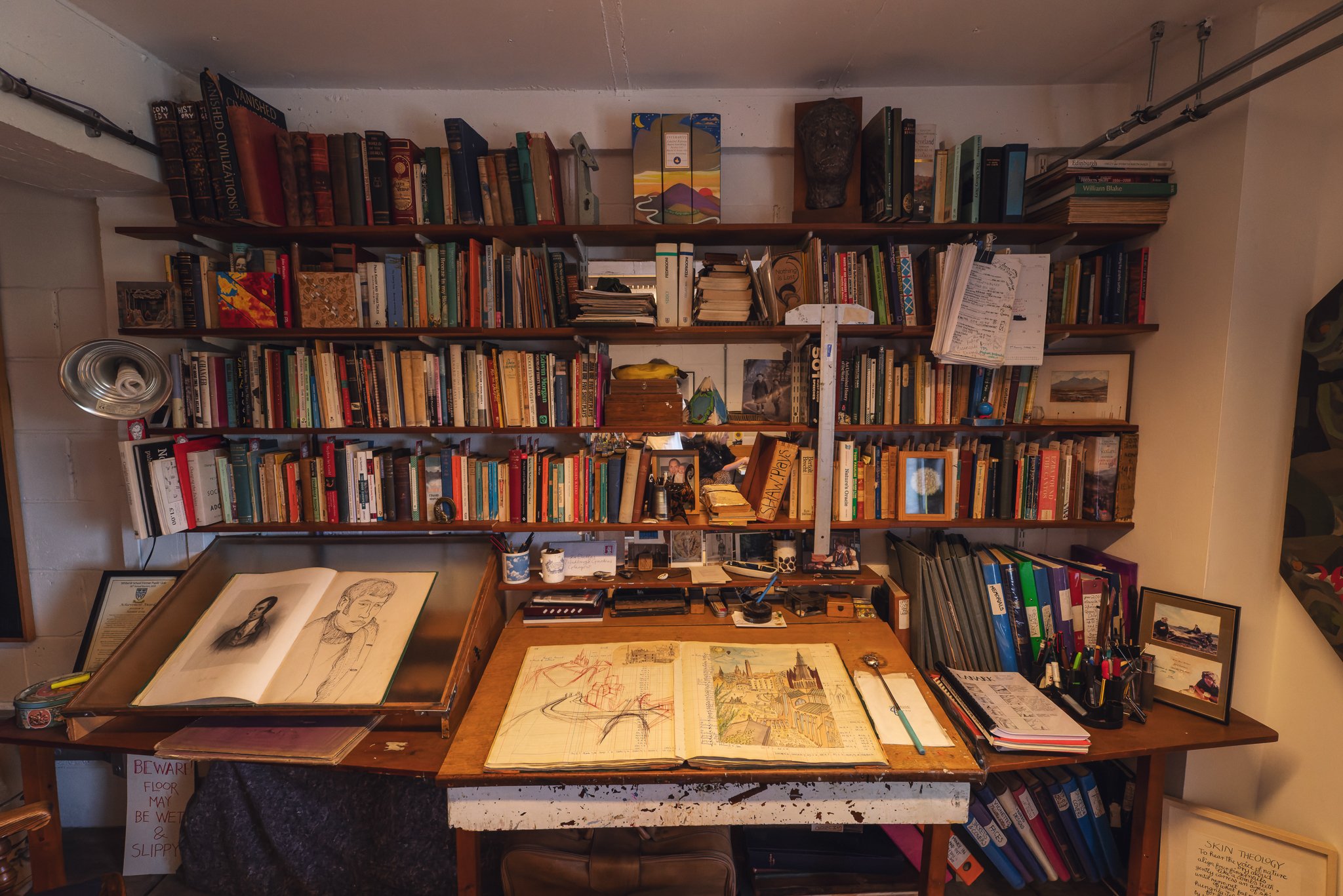



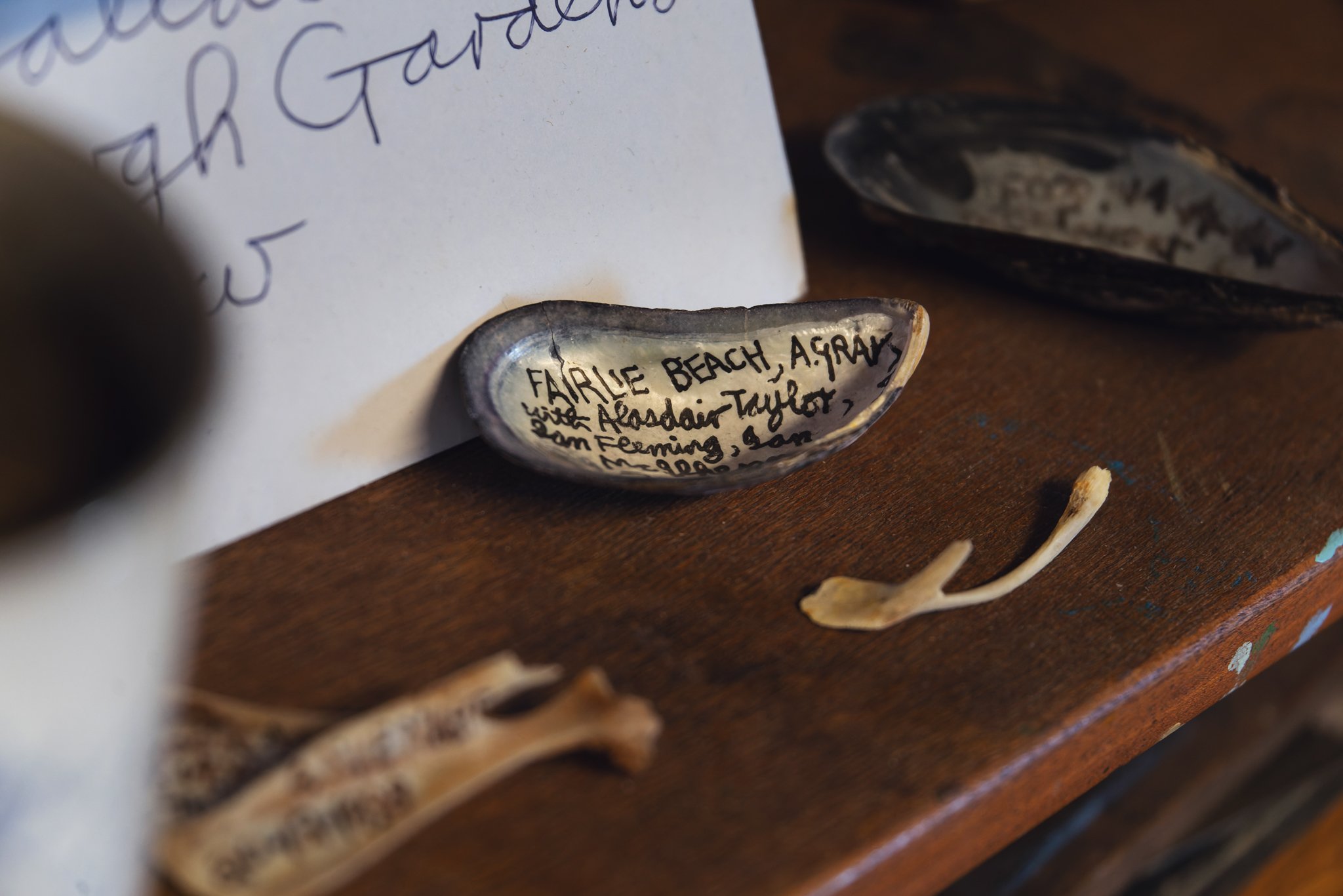
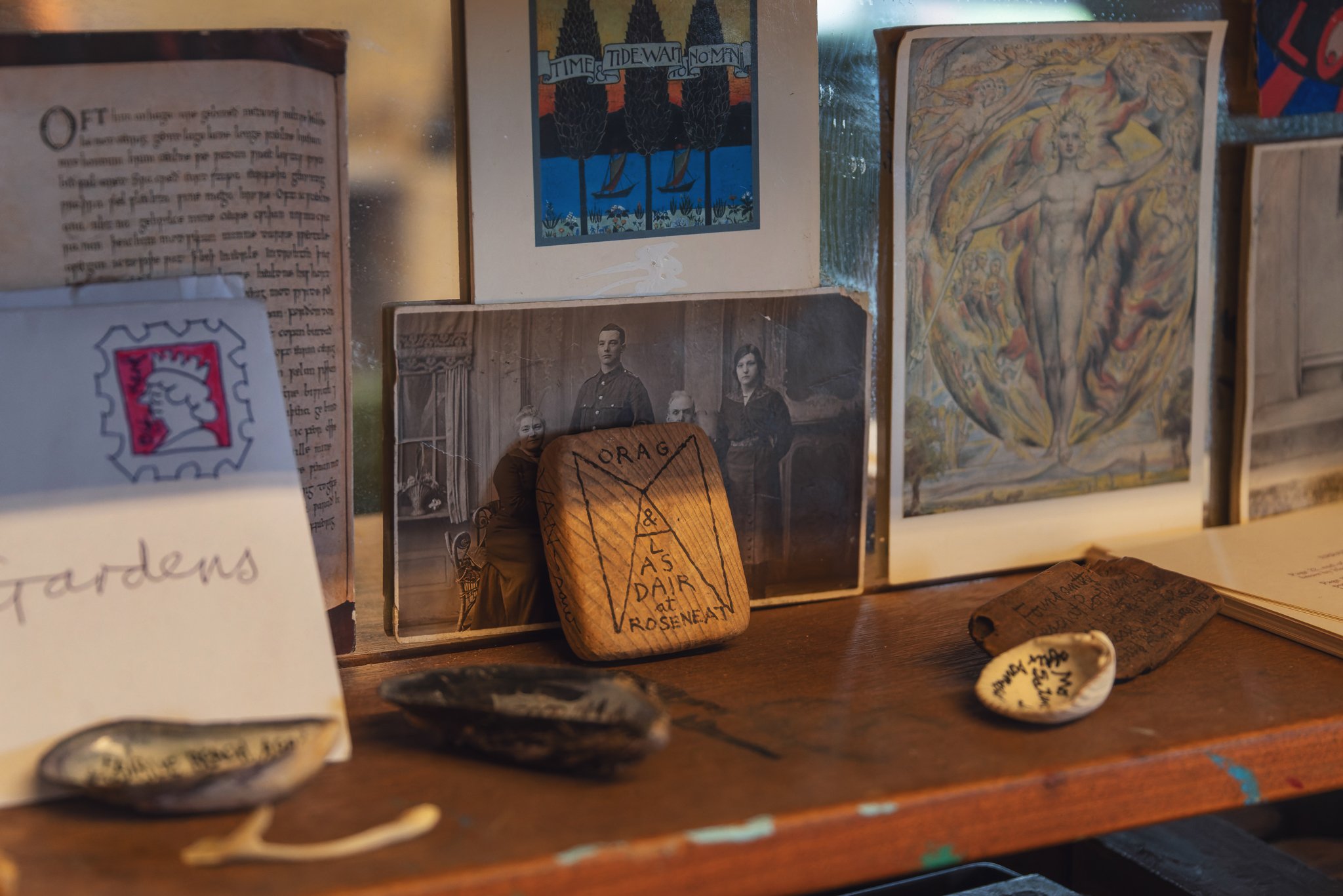
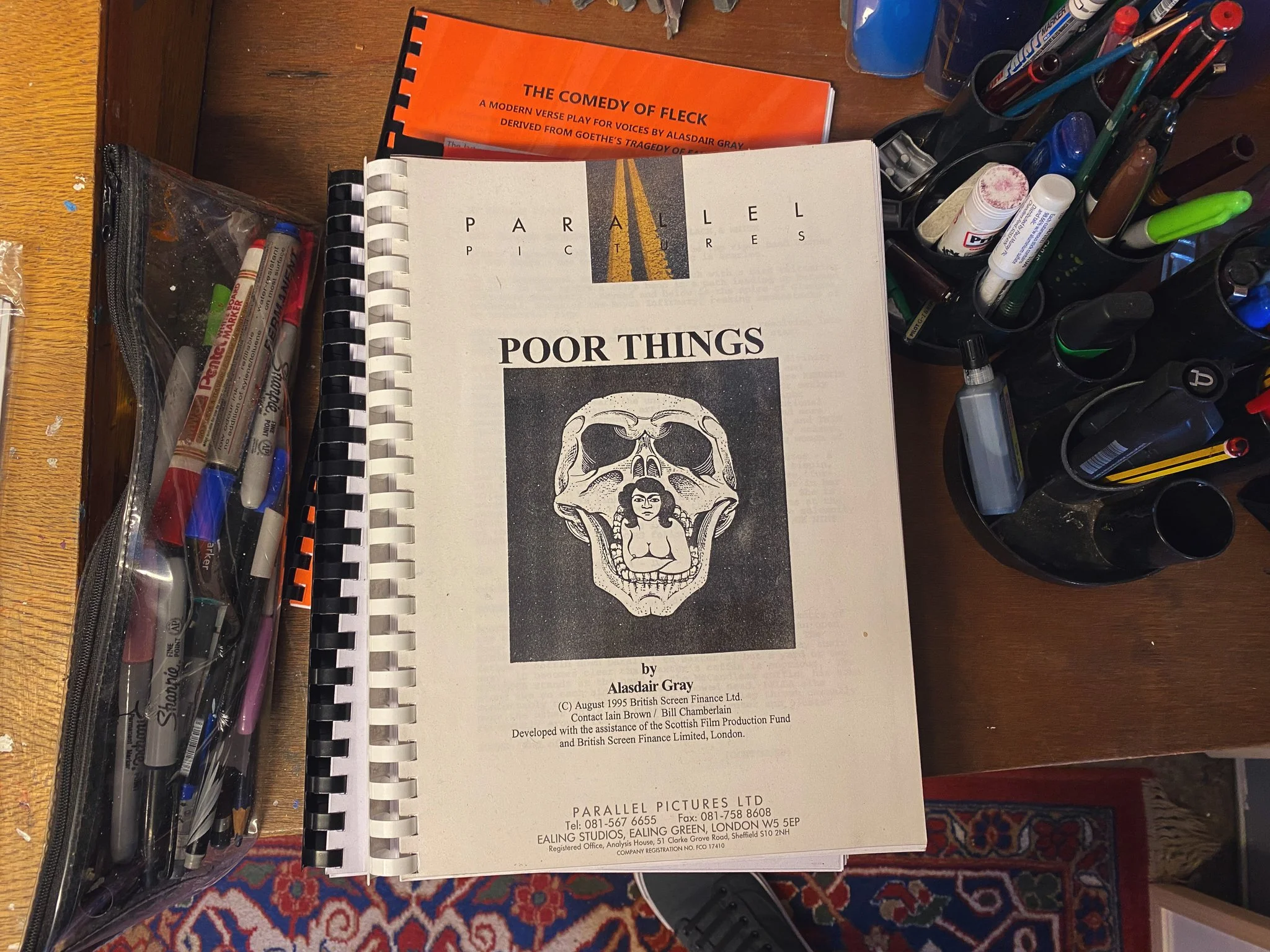
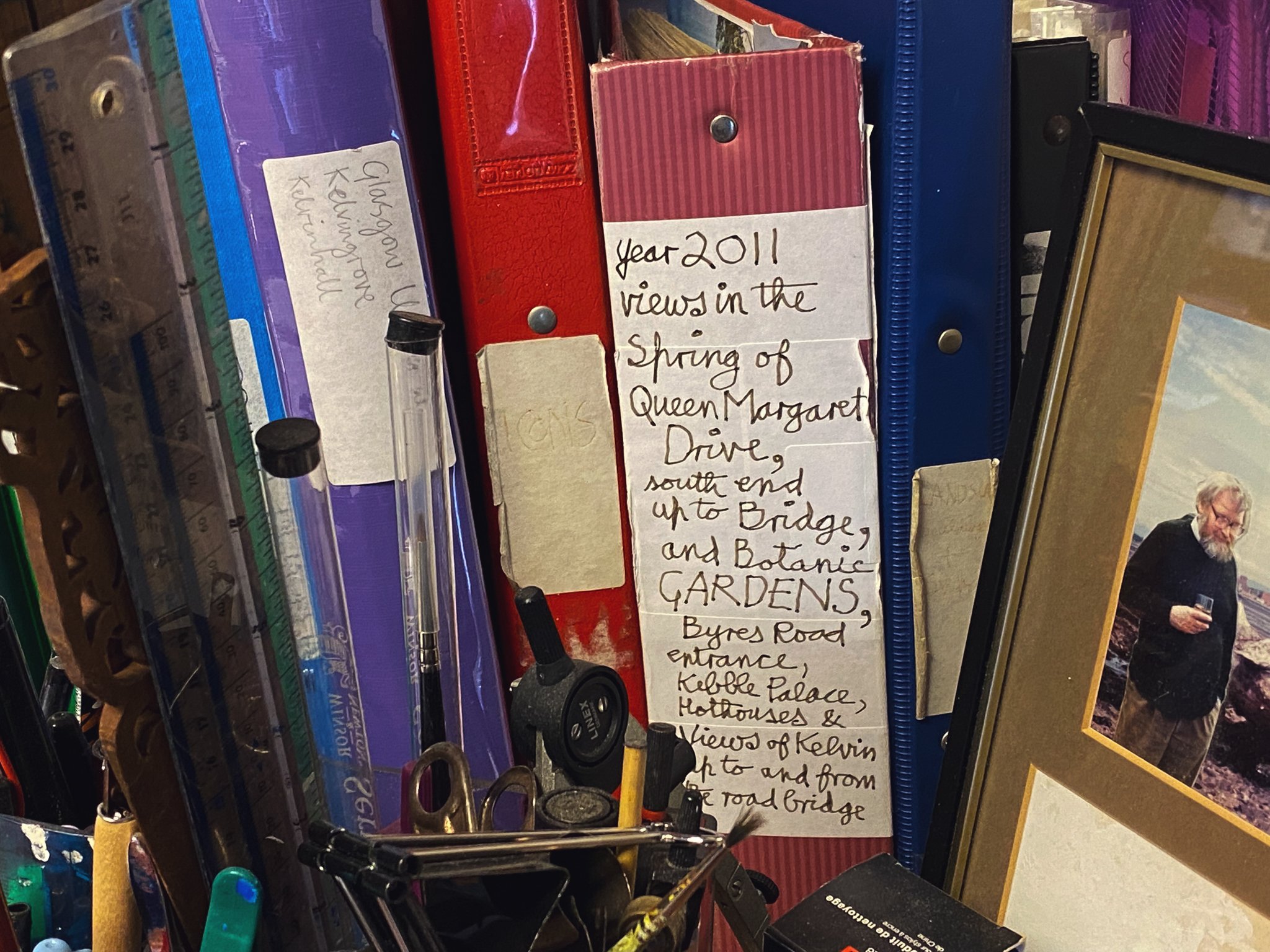
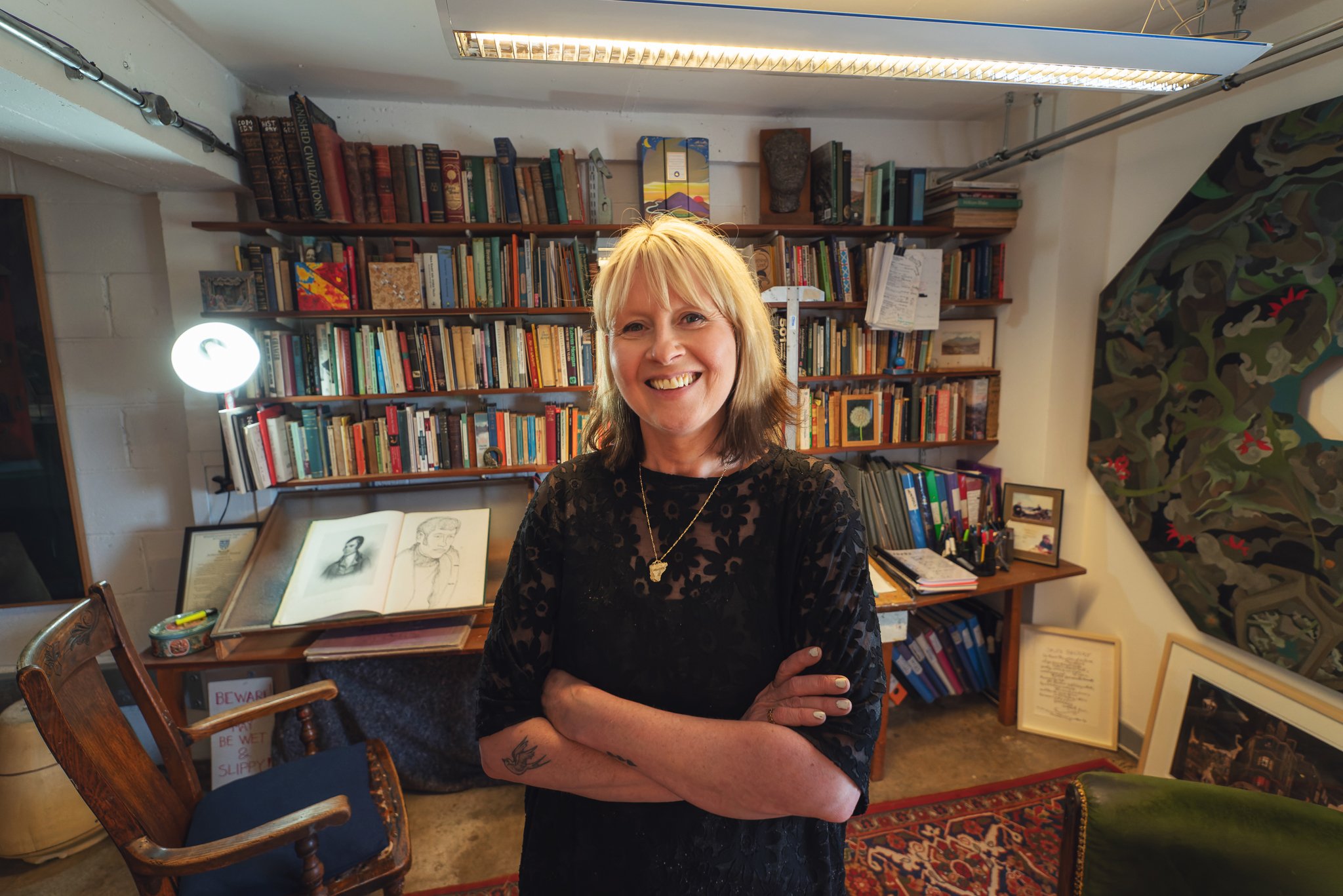
Surveying this big slice of Alasdair’s life, I instantly gravitated to the huge ledger book open on the desk - discarded from some old Glasgow business in the 50s, and picked up off the street by the young artist, for whom it became a scrapbook for his projects. Within its inky pages, between the lines of names and numbers, are a stream of ideas, sketches, designs, and to my delight a number of Alasdair’s own photographs. Photography was naturally a part of planning his drawings and paintings, but these prints still caught me off guard; firstly, because I’d never seen Alasdair with a camera in his hands and hadn’t considered this could be another string in his bow. Secondly, the first photos mounted in the ledger are pictures of my current house in the west end! Other shots feature buildings I have often photographed myself.
Alasdair Gray’s Photo of the New City Road Savings Bank, alongside my own photo of the same building taken as part of my Glasgow’s Winter photobook.
Alasdair’s photos show Glasgow streets, some faintly recognisable, some long since buried under the scar of the M8 motorway. In them we see Glaswegians interacting with the city infrastructure, walking from place to place, crossing bridges, entering and exiting buildings. It’s clear these photographs were not only a visual reference for composition, but they informed Gray’s concept of the city as a great, living, civic organism. More albums of reference photos sit next to the desk, and I hope to have another look through them upon a future visit.
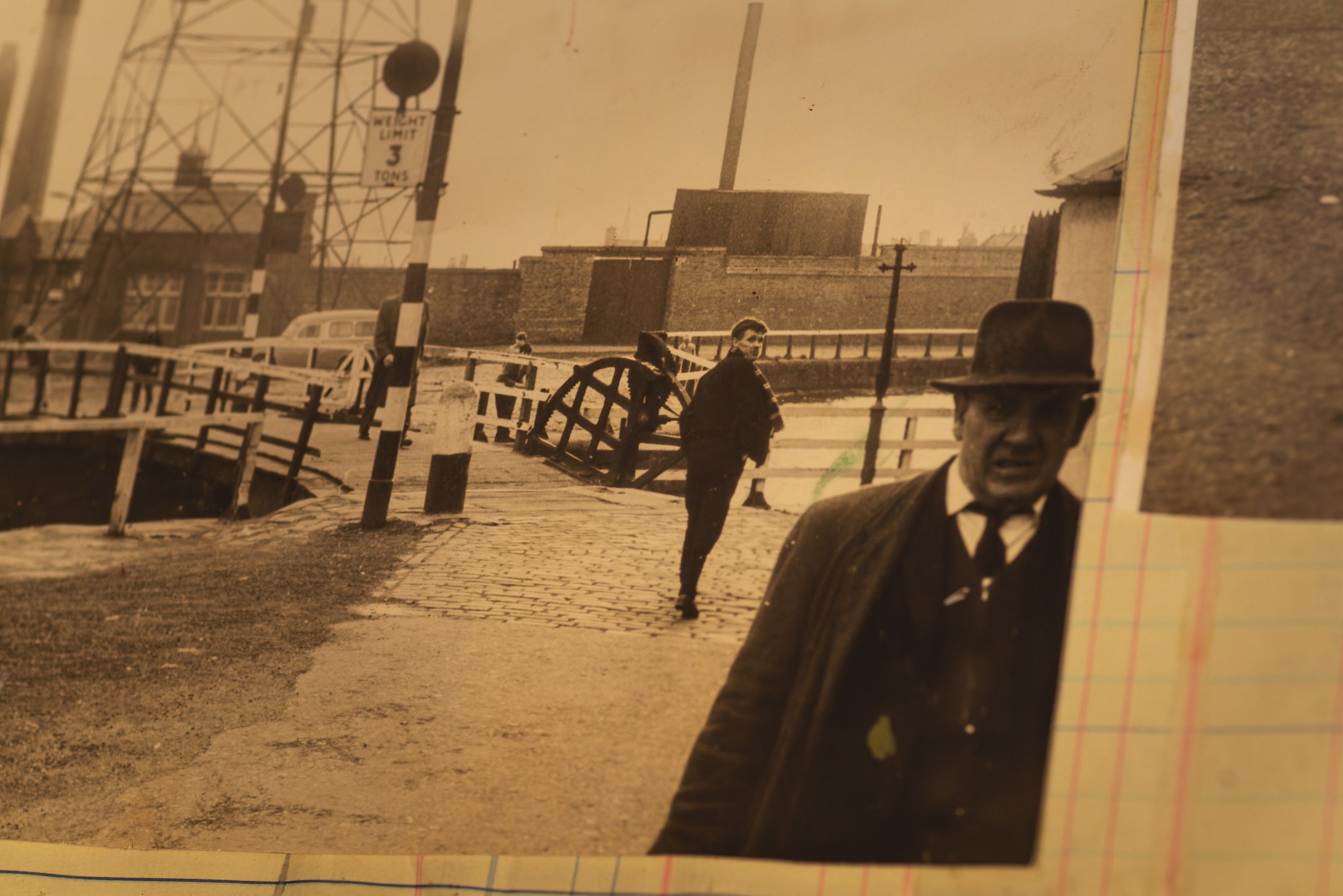
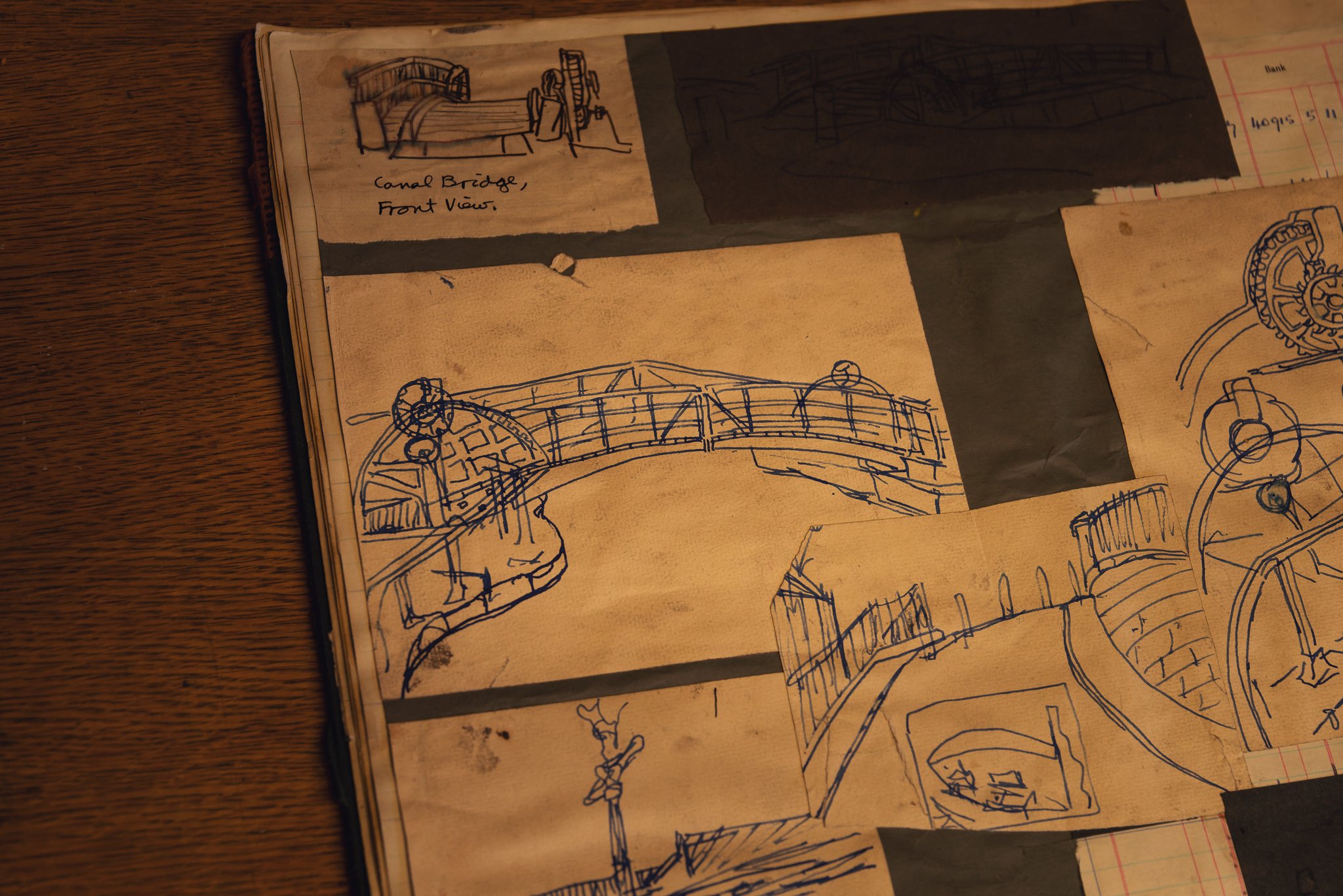
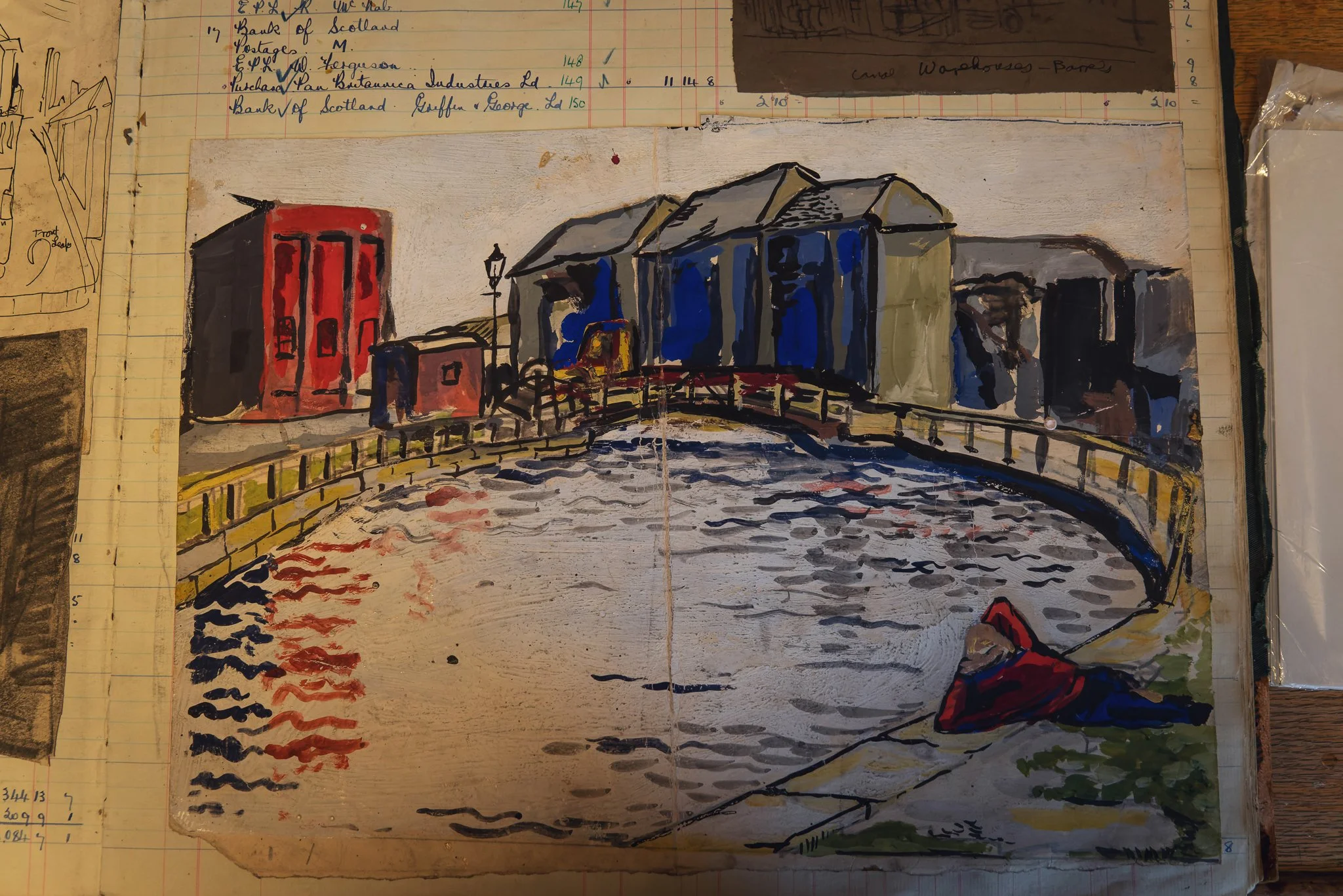
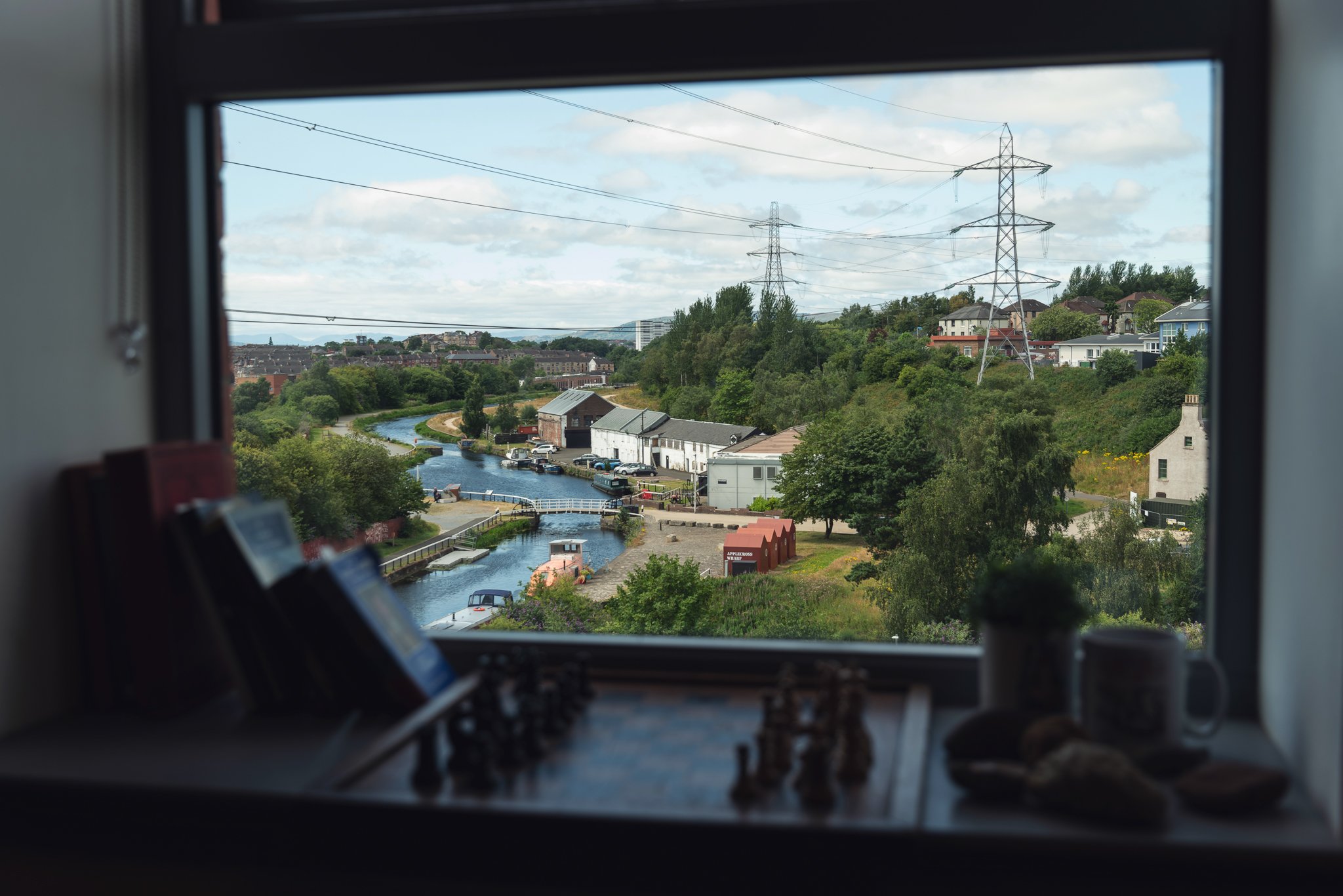
A work in progress - from photos of the bascule bridge of the canal, to sketches. and eventually to painting. The bridge can be seen from the window of the Archive.
Opposite his desk is the set of drawers which used to sit looking out of his window. Piled high with countless paintbrushes and pencils, each drawer is filled with a lifetime of drawings and designs. Images now famous around the world from public murals to the covers of books, present here in every stage of progress, from pencil sketches to finished inked designs. I suspect it would take days to go through and take in every artefact here - I warned Sorcha she may never be rid of me!
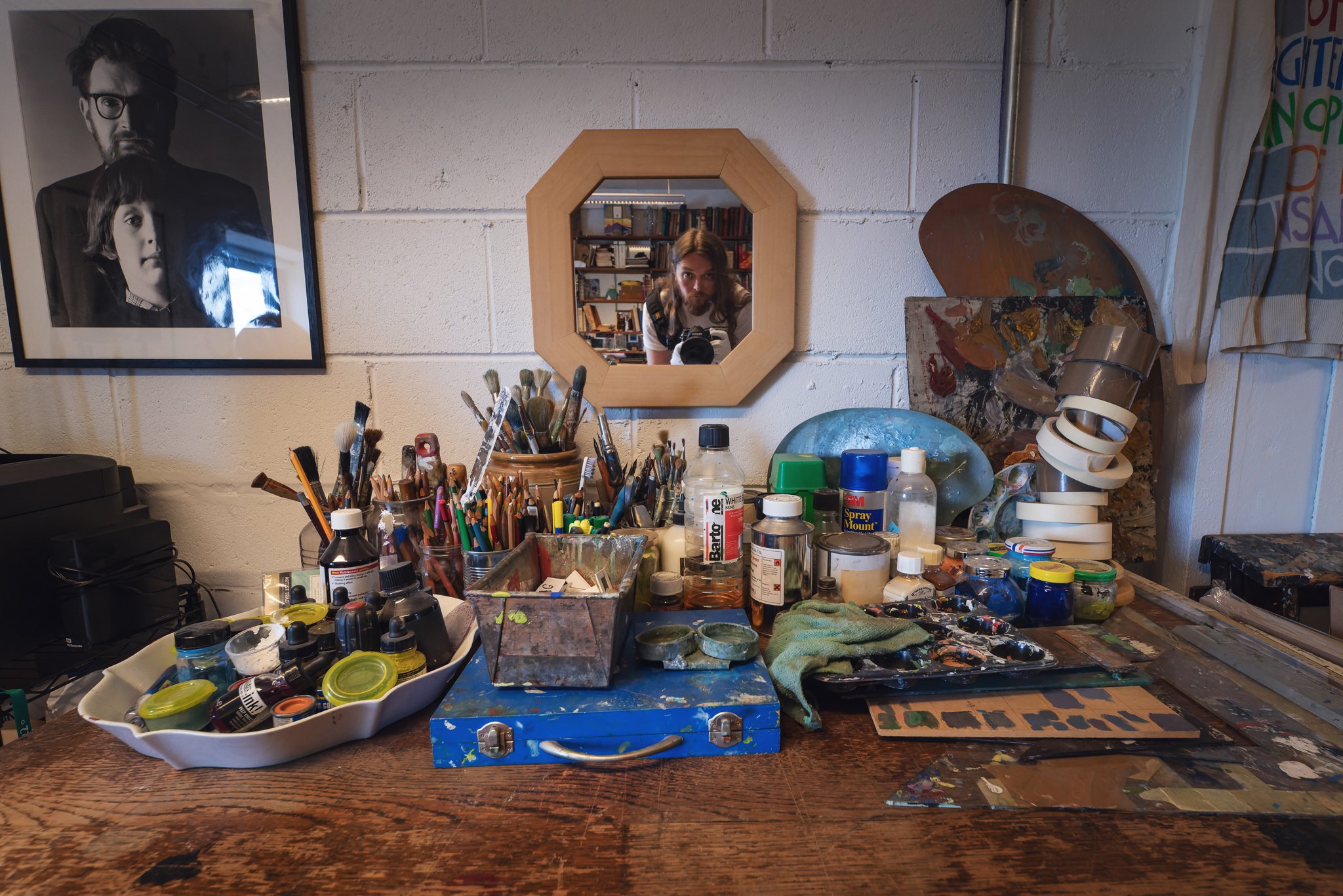

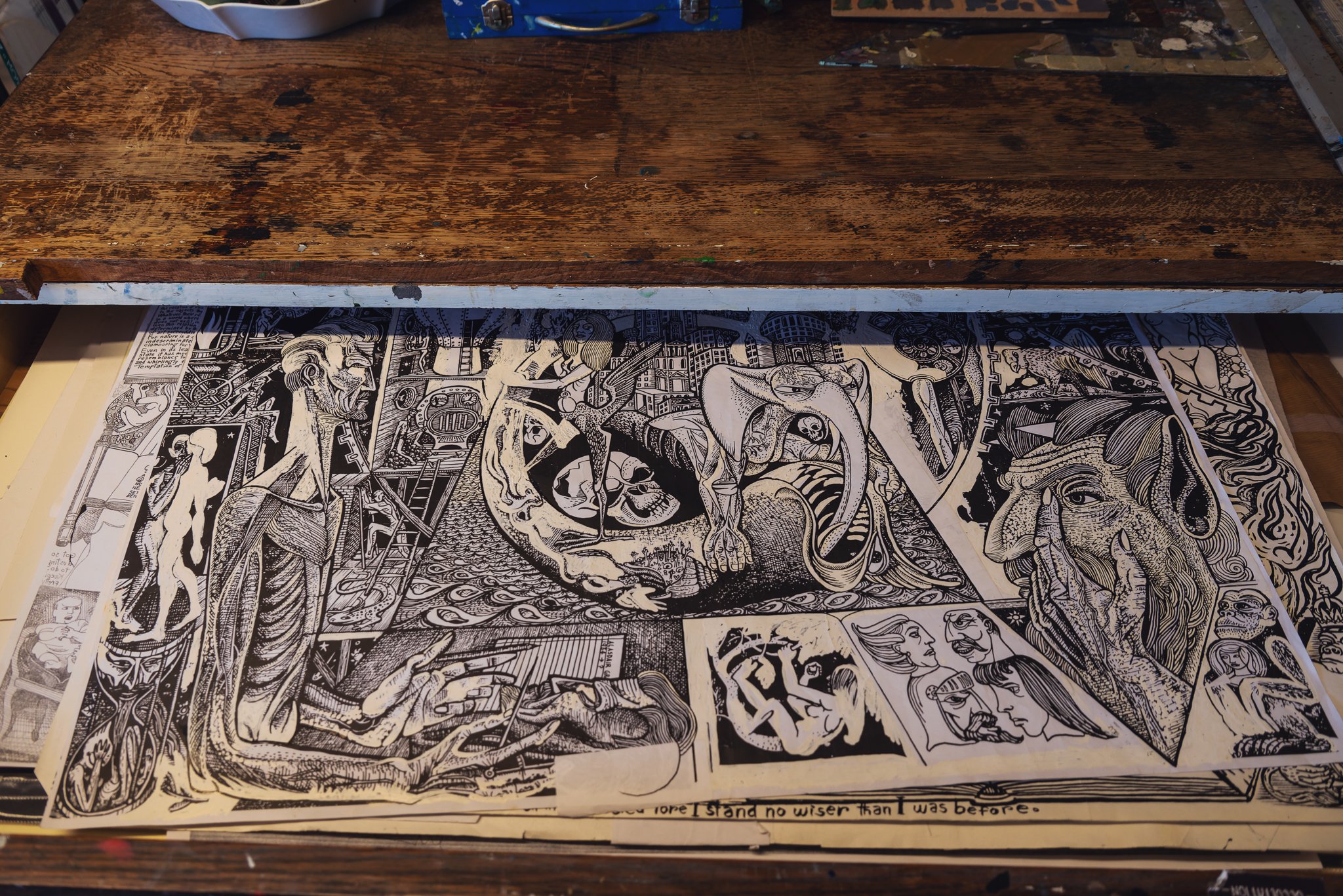

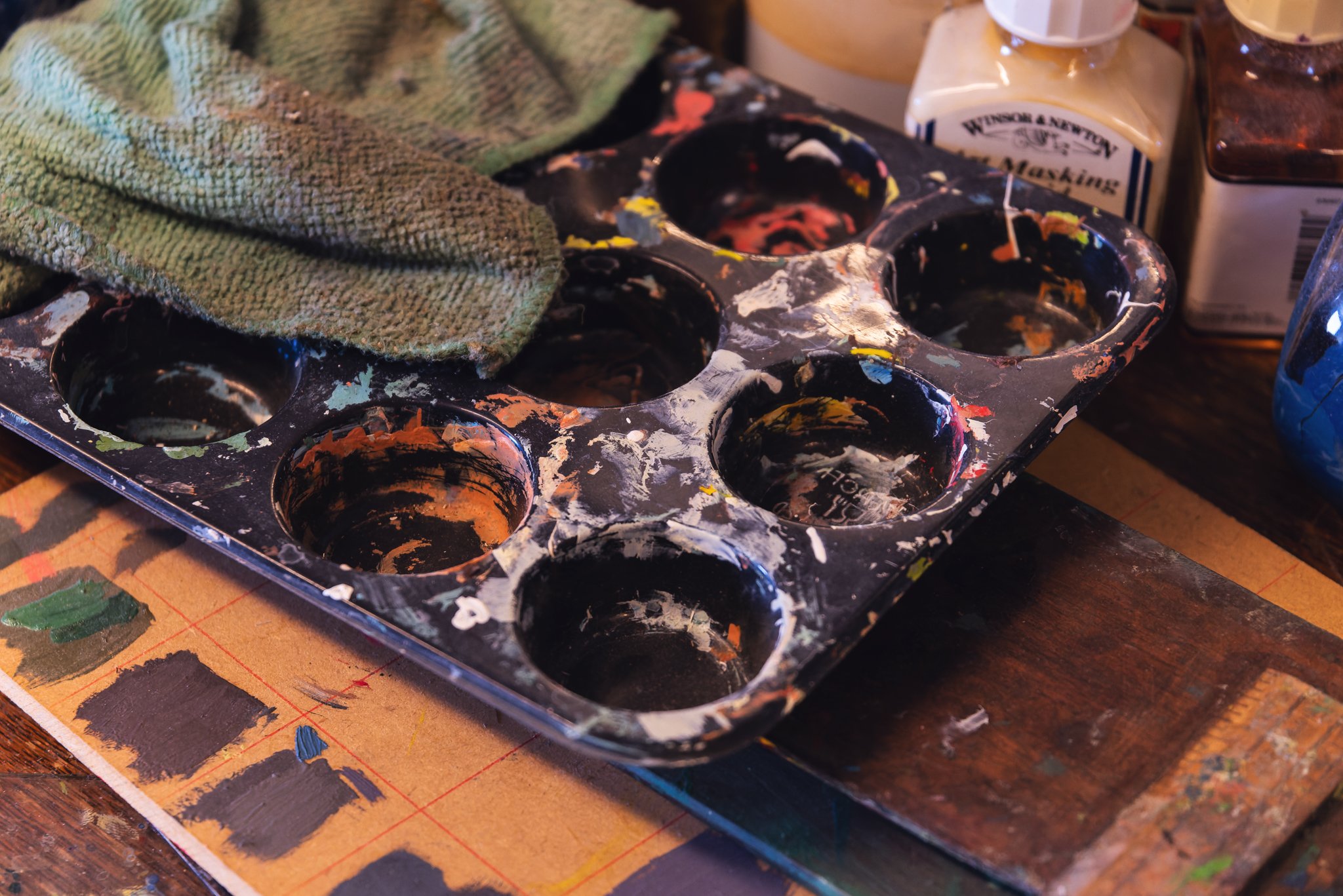
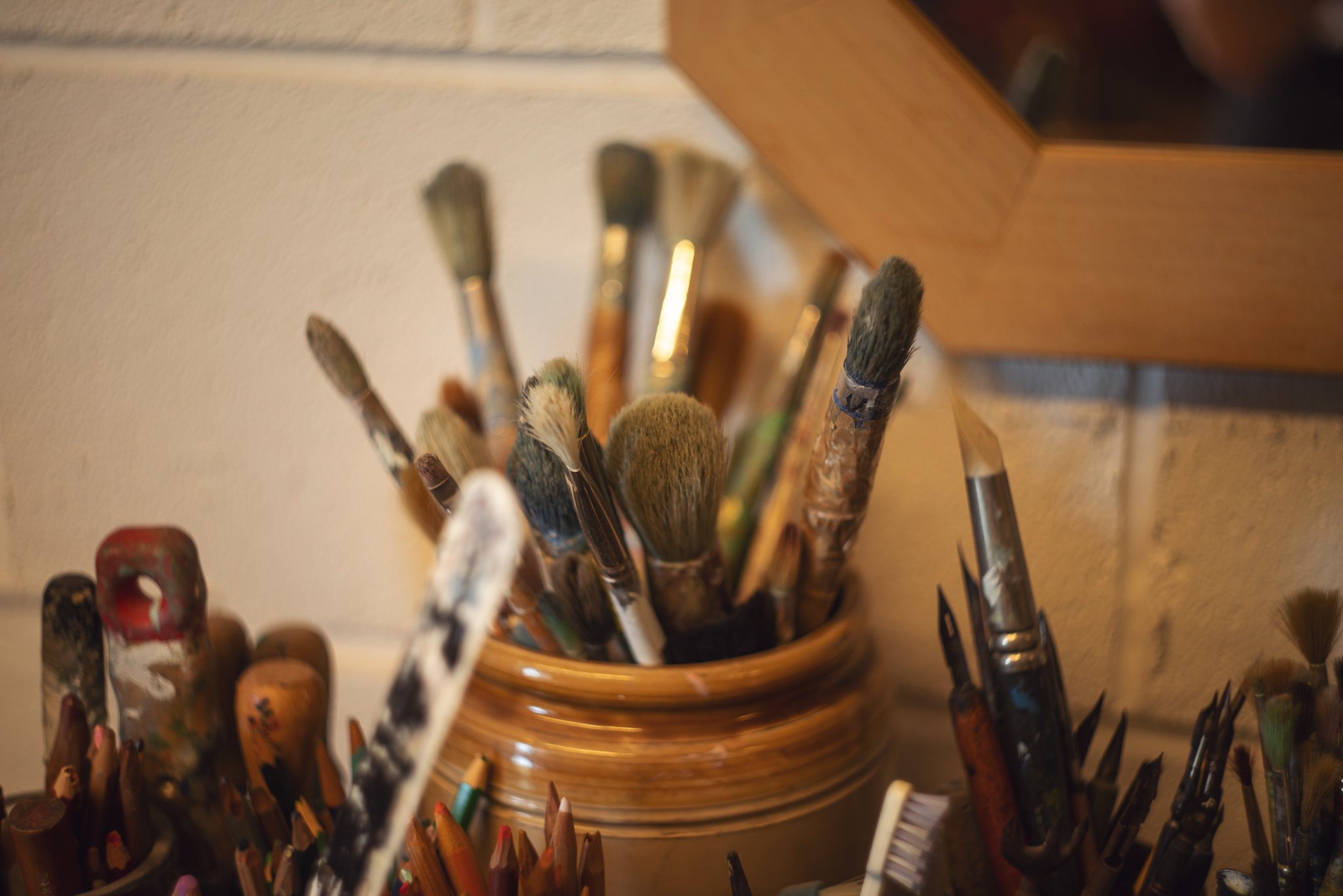
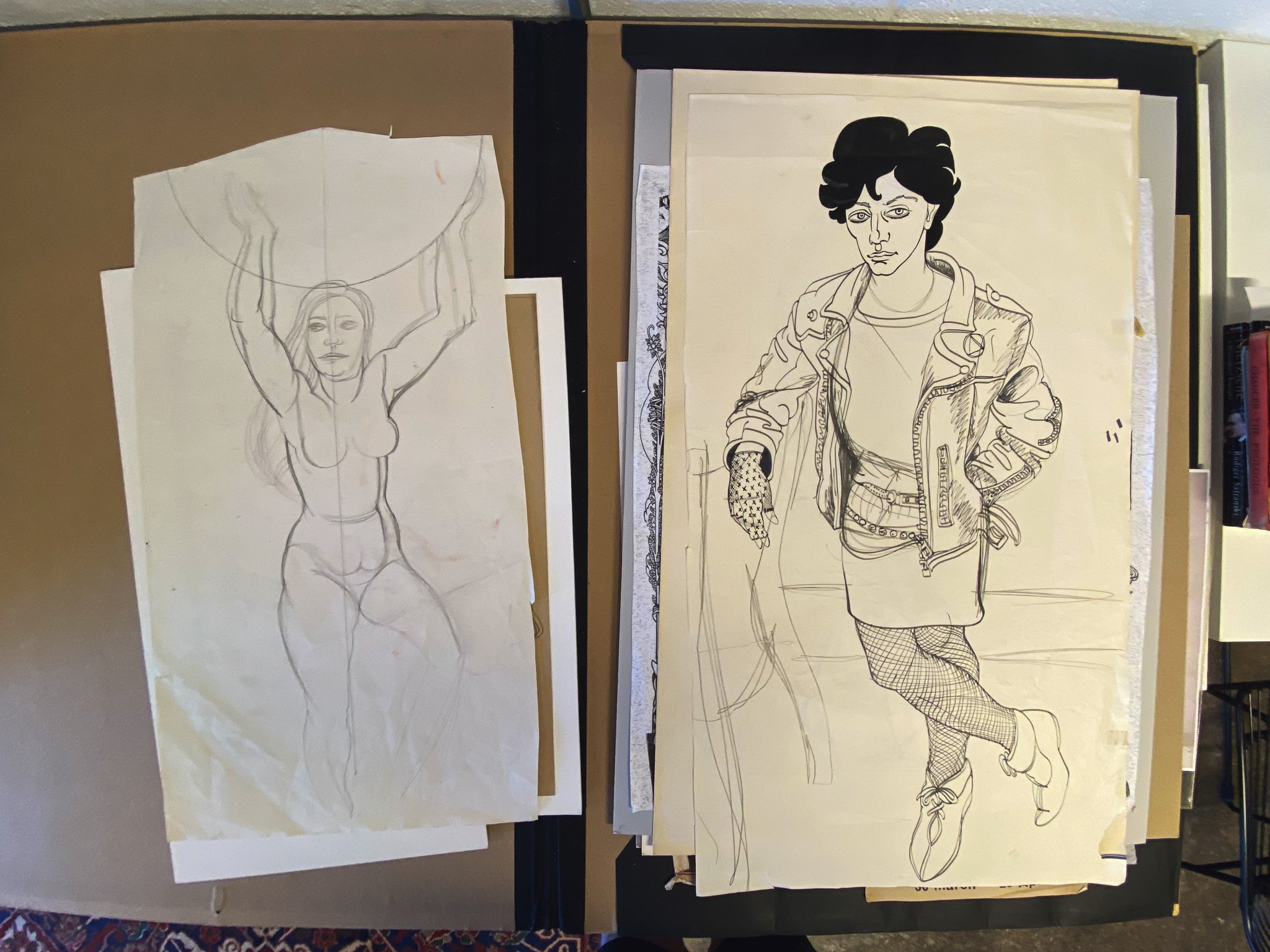
I feel I barely scratched the surface of the Archive during my visit. I keep coming back to the thought of how fortunate Glasgow is to have such a significant collection in one carefully curated place, and would like to once again thank Sorcha for showing me around, and knowing all the answers to my long list of questions about Alasdair and his work. For anyone with an interest in the works of Alasdair Gray, I really can’t recommend a visit to the Archive enough.
Alasdair’s seat, Alasdair says - My portrait of Sorcha seated in Alasdair's big green chair.
Epilogue:
Coming back from the bar in Oran Mor, I found my partner sitting and chatting with a familiar looking woman introduced to me as Morag. We were soon joined by her husband, Alasdair Gray, and before long, my student loan had melted into whisky and wine as the four of us set the world to rights. Every so often another patron would approach our table and ask Alasdair to sign their books - surprisingly, he was without a pen, and so borrowed mine (now one of my most treasured possessions). He tried to apologise, to which I joked about his adoring fans. “I don’t WANT any adoring fans!” Alasdair boomed in his creaky melodramatic voice, but the warmth and generosity with which he met each interaction suggested otherwise.
I look back on this particular evening (as much as I can remember of it) with incredible fondness. Both Morag and Alasdair were wonderful people, and it is a rare treat to be able to share an evening discussing books, films, and Scotland with a true renaissance weegie such as Alasdair Gray. (He was either oblivious to the fact I had met him at a dozen book signings prior, or gracious enough not to acknowledge that I was one of his adoring fans.)
I think Gray appeared a couple of times between Edwin Morgan and Robert Burns during my Higher English coursework, but it wasn’t until I enrolled in Scottish Literature at the University of Glasgow that I truly began to appreciate his work. I was half-way through a Chemistry degree - God only knows why this perplexed science student was admitted to a literature course. But there I was studying under the very supportive (and patient) Rodge Glass, who when not chasing me for overdue essays was actually Alasdair Gray’s secretary. Reading more of Gray’s work during this course swept me up and helped me see this city and the rest of the world in ways I never had before. After having my mind blown for two semesters and realising I had absolutely no idea about anything, I had to return to perceived reality and complete my Chemistry degree. Two aborted careers later, I found myself embracing photography full time, and finally accepting my fate as an artist. I spent a number of years very reluctant to work under that title, but I now realise that the voice trying to convince me I was an artist all those years, was Gray’s.
Since Gray’s passing, his absence feels very tangible. Sometimes I regret not asking him if I could shoot his portrait after I began photography. I know he would have warmly obliged, but I also know he must have had requests like that frequently. So instead, I’m just grateful I got to meet him as often as I did, and share my appreciation for all he gave me through his books. I still miss saying hello to him in the pub or bookshop, and seeing him on the subway or tottering home up Byres Road. There’s a gap in the cityscape where he used to be. But with the accessible and intimate nature of the Archive and its contents you can practically hear Alasdair’s unmistakable voice booming out from his big green chair, bridging that gap.


